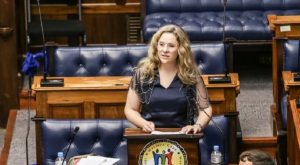The 2022/23 Budget Speech delivered by Minister of Finance Enoch Godongwana has been the main characterised by the revenue windfall which is attributable to the commodities boom that transpired in 2021.
Due to the lockdown induced economic contraction registered in 2020, the commodities boom was a result of the easing of lockdown restrictions globally as international trade, finance and supply chains began to take place.
Leading to the demand of commodities produced in South Africa coupled with higher prices resulting in healthy margins for the mining industry broadly.
Consequently, this enabled the South African Revenue Services (SARS) to collect R182 billion more worth of tax receipts than anticipated.
For the average South African and its social safety security net; it has meant that National Treasury has extended the Social Distress of Relief Grant by an additional 12 months amounting to an estimated R40 billion, an additional R20,5 billion can be used to honour the public sector wage agreement from 2021 and the debt-to-GDP ratio stabilises at 75% of GDP a year earlier than anticipated.
The weakening of the Rand and the global price of brent crude oil in 2021 ticking toward the direction of $100 a barrel has seen South African motorists pay more on the petrol pump and has been a key driver of headline inflation and the resultant gradual normalisation of interest rates by the South African Reserve Bank (SARB).
For the 2022/23 fiscal year, there will be no increment to the general fuel levy and Road Accident Fund, providing welcomed relief to motorists.
On the companies’ front, corporate income tax has been reduced by one percentage point, coupled with the pronouncement by National Treasury of the business bounce-back programme. This programme is a result of the failure of the loan guarantee scheme which had set aside R100 billion to be able to support the Small, Micro and Medium Enterprises (SMMEs) as a part of the economic recovery package announced by President Ramaphosa in May 2020.
The scheme failed to attain a loan disbursement target of 10%. The adjustment to the programme includes amongst others, the loosening of the eligibility criteria for SMMEs and an equity-linked loan structure, the details of which will be provided by the Banking Association of South Africa on behalf of participating banks and the various development finance institutions.
The personal income tax revenue line item has continued to be the biggest revenue driver amounting to R587,9 billion in collections, followed by Value-Added Tax (VAT) and corporate income tax (CIT) resulting in the strengthening of tax revenue expected to reach R1,55 trillion for 2021/22, which is above the projections.
This enhancement in revenue has translated into tax proposals that would amount to R5,2 billion worth of relief owing to no increases with respect to the administered prices of fuel and the boosting of incentives for youth employment as a part of the broader support of the economic recovery programme.
SARS is on a recruitment drive of critical skills in ICT and artificial intelligence-related roles in order to develop better processes and methodologies in order to improve compliance, these are positive strides as this is anticipated to yield the benefit of optimal revenue collection in the medium to long-term.
The consolidated budget deficit is forecasted to reduce to 4,2% of GDP in 2024/25 from 6% of GDP, and debt-service costs continue to comprise an increasing share of GDP and revenue anticipated to average R333,4 billion per annum.
Fiscal policy as it relates to aggregate demand plays a crucial role in being able to drive development, the management of network industries and the risks associated with it remain and will need to be paid close attention to as the benefit of the revenue windfall are unlikely to be a permanent feature of our fiscal fortunes.
Opinion by Ndumiso Hadebe, Economist and CEO at KH Research Equity Partners






